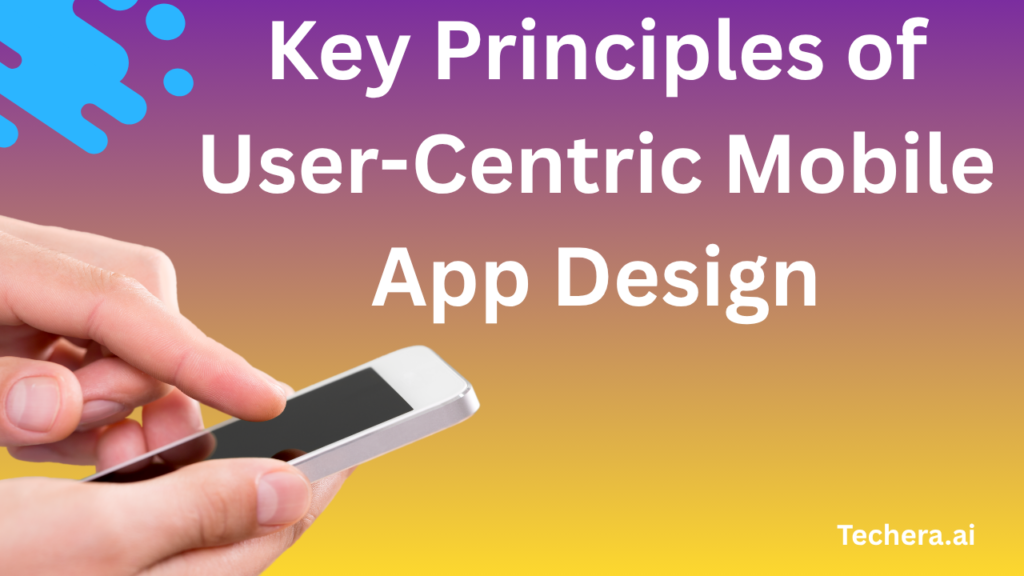
Explore why user-centric mobile app design and development are crucial for creating intuitive and successful apps. Learn how prioritizing user needs leads to higher engagement and better performance in mobile app design and development.
Introduction
In today’s digital-first world, users have endless choices. What separates a successful app from a forgotten one isn’t just cutting-edge technology — it’s empathy. User-centric design ensures that every interaction, layout, and feature solves a real problem for the person using it. When users feel understood, they stay longer, engage more, and trust your brand.
Understanding User-Centric Design
User-centric design (UCD) is all about creating products that serve the people who use them — not just the business or the developers. It focuses on understanding the user’s needs, behaviors, and challenges, then crafting experiences that feel natural and intuitive. Unlike traditional design, which often prioritizes aesthetics or business goals, UCD puts the user at the center of every decision.
The Evolution of Mobile App Design
Mobile design has come a long way. In the early 2010s, apps were simple, static, and function-focused. But as competition grew and smartphones evolved, developers realized that users crave delightful experiences — not just working apps. Today, mobile app design and development is not just how an app looks, but how it feels and functions. In 2025, successful apps prioritize emotions, personalization, and accessibility.
Why User-Centric Design Matters
1. Enhances Engagement and Retention
Users return to apps that “get them.” A user-centered design ensures a smooth flow that keeps people engaged and reduces churn.
2. Drives Business Growth
Happy users mean higher ratings, better reviews, and organic referrals — all of which directly impact growth and revenue.
3. Builds Trust and Loyalty
When an app respects users’ time, privacy, and preferences, it naturally earns trust. And trust drives long-term success.
Key Principles of User-Centric Mobile App Design

Simplicity and Clarity
The best designs are invisible. Apps should guide users naturally without overwhelming them. Every button, color, and animation must have a clear purpose.
Accessibility and Inclusivity
Designing for everyone means accommodating different abilities, devices, and cultural contexts.
Consistency and Familiarity
Using familiar icons, layouts, and gestures ensures users don’t have to relearn common interactions.
Feedback and Interaction
Instant visual or haptic feedback reassures users that their actions are working as intended.
The Role of User Research
User research forms the backbone of every successful app. It helps you identify what users want, what frustrates them, and what they expect next.
- Surveys and interviews reveal direct feedback.
- Usability tests uncover hidden pain points.
- Personas and journey maps help visualize the complete user experience.
Without research, you’re just guessing — and guesses cost money.
Also Read : Top Mobile App Design and Development Trends to Watch in 2025
Creating Seamless User Experiences (UX)
Smooth navigation and frictionless user flows are vital. Users should reach their goal with as few taps as possible. A clean onboarding process helps new users understand the app’s value instantly. Remember: the first impression often determines whether users stick around or delete your app.
UI Design: Where Function Meets Aesthetics
User Interface (UI) design is where usability and beauty meet.
- Visual hierarchy guides attention naturally.
- Typography and color set tone and emotion.
- Micro-interactions — like button animations or progress loaders — bring the interface to life.
A well-crafted UI doesn’t just look good — it makes people feel good.
The Importance of Mobile Responsiveness

In a multi-device world, responsiveness is key. Apps should look and work flawlessly on different screens — from tiny smartwatches to foldable phones. Designing for diverse devices ensures a consistent brand experience everywhere.
Accessibility: Designing for All
Accessibility is not optional; it’s essential. mobile app design and development must support screen readers, clear contrast ratios, and simple navigation for users with disabilities. Inclusive design ensures everyone, regardless of ability, can enjoy your app.
Integrating Feedback Loops
The best apps never stop evolving. Continuous user feedback helps developers improve experiences. Regular updates based on real insights show users you’re listening — and they’ll reward you with loyalty.
The Role of Performance and Speed in UX
If an app is slow, it will not work, no matter how lovely it is. A one-second lag can reduce conversions by 7%, according to studies. Optimizing for load times, responsiveness, and battery usage directly impacts retention and satisfaction.
Balancing Innovation and Usability
While innovation attracts attention, usability sustains success. It’s tempting to add flashy features, but too much complexity can confuse users. The best apps innovate subtly — enhancing experience without overwhelming it.
User-Centric Development Practices
A user-centered app doesn’t end with design — it extends into development.
- Agile methodology enables quick iterations.
- Cross-functional collaboration ensures everyone — from designers to coders — stays user-focused.
- Frequent testing catches usability issues early before they reach production.
Measuring Success: KPIs for User-Centric Apps
To ensure your app truly serves users, track metrics like:
- Retention Rate — how often users return
- Session Duration — how long users engage
- NPS (Net Promoter Score) — how likely users recommend your app
- Conversion and Drop-off Rates — identifying friction points
Data-driven insights are key to continuous improvement.
Common Mistakes to Avoid
- Ignoring user feedback – leads to stagnation.
- Overcomplicating UX – frustrates users.
- Designing for trends, not people – trends fade; human needs don’t.
- The objective is to connect, not to impress.
Future of User-Centric Design
In the coming years, AI, personalization, and emotion-aware technology will define user experience. Apps will predict user moods, adapt layouts dynamically, and deliver hyper-personalized experiences. But the principle remains the same — technology should serve people, not the other way around.
Conclusion
User-centric mobile app design and development aren’t just design philosophies — they’re the foundation of lasting success. When you prioritize real user needs over assumptions, you create apps that feel effortless, intuitive, and deeply satisfying. Remember: the best technology disappears behind a seamless experience.
FAQs
1. What is user-centric mobile app design?
It’s an approach focused on creating apps that prioritize user needs, preferences, and experiences over business or technical convenience.
2. Why is user research so important?
Because it helps you understand real user pain points and build solutions that actually solve problems.
3. How do you make an app user-friendly?
Focus on simplicity, clarity, accessibility, and continuous improvement based on feedback.
4. Can user-centric design improve revenue?
Yes — happy users are more likely to engage, purchase, and recommend your app, directly boosting growth.
5. What’s the future of user-centered app design?
AI-driven personalization and emotion-aware interfaces will make apps even more intuitive and adaptive.

